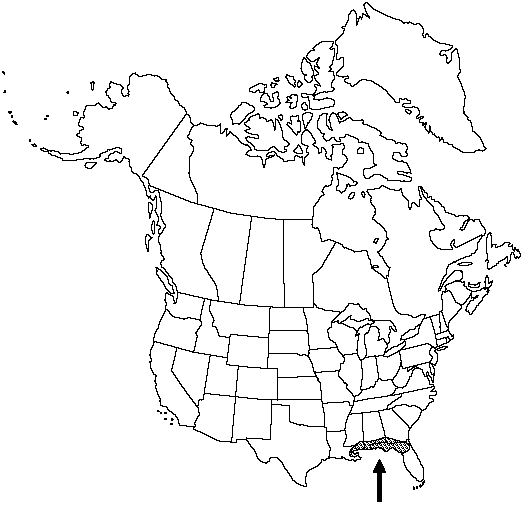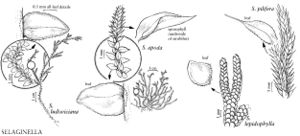Selaginella ludoviciana
Ann. Sci. Nat., Bot. sér. 4, 13: 58. 1860.
Plants terrestrial, forming diffuse mats. Stems long-creeping, usually ascending, sparsely branched, branches mostly simple or 1-forked, flat, not articulate, glabrous. Rhizophores axillary, 0.1–0.2 mm diam. Leaves delicate, papery. Lateral leaves well spaced, green, ovate to ovatelanceolate, 1.6–2.65 × 0.98–1.64 mm; base slightly cordate; margins transparent, serrate; apex acute to slightly obtuse, conspicuously ending in teeth. Median leaves spaced, ovatelanceolate to narrowly ovatelanceolate (on basal stems), 1.3–2 × 0.4–0.8 mm; base oblique on inner side, rounded and prominent on outer side; margins transparent, serrate; apex long-acuminate to bristled. Strobili solitary or paired, lax, flattened, 0.4–0.7 (–1.5) cm; sporophylls very strongly keeled, keel dentate, base slightly cordate to rounded, margins transparent, sparsely serrate, apex acuminate; megasporophylls larger and wider than microsporophylls, usually on underside of strobili.
Habitat: Swamps, stream banks, ditch banks, or moist ravines of calcareous ledges
Elevation: 0–50 m
Distribution

Ala., Fla., Ga., La., Miss.
Discussion
Among the species in the flora, Selaginella ludoviciana is most closely related to S. apoda (see discussion) and has often been included in S. apoda. W. R. Buck and T. W. Lucansky (1976) concluded that two species should be recognized based on anatomic and morphologic data. A close examination of distribution of sporangia in the strobili in many specimens reveals that sporangial arrangement may be more variable than reported by H. T. Horner Jr. and H. J. Arnott (1963). All species in the S. apoda complex (see S. apoda and S. eclipes for discussion on the complex) have sporophylls with fused blade tissue.
Selected References
None.
